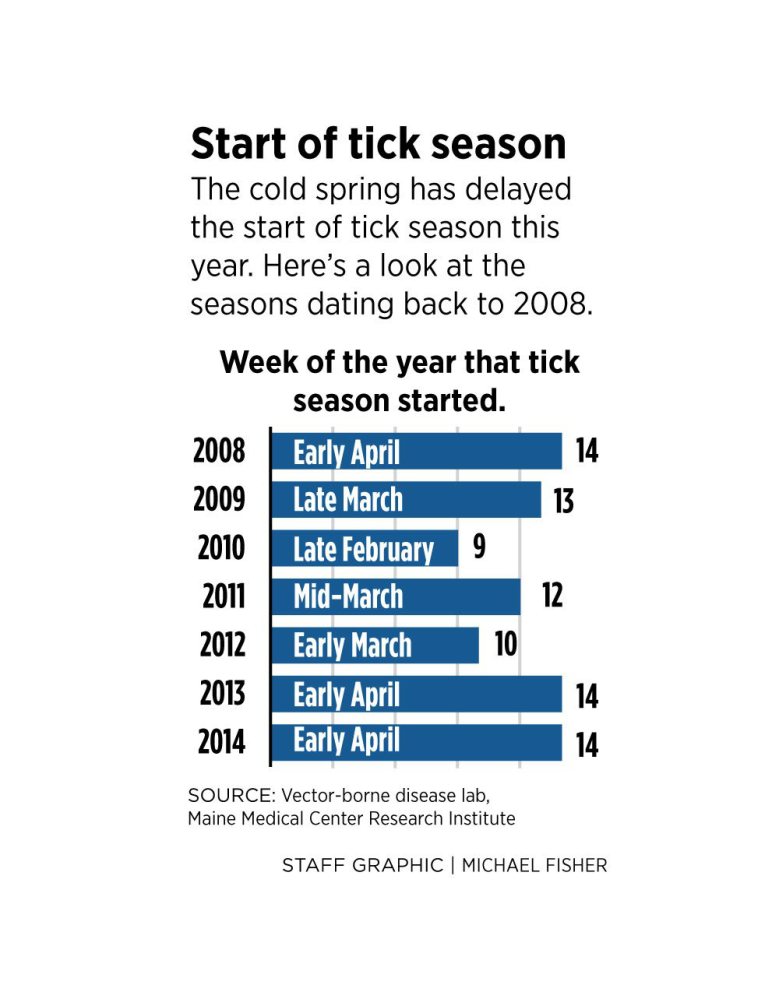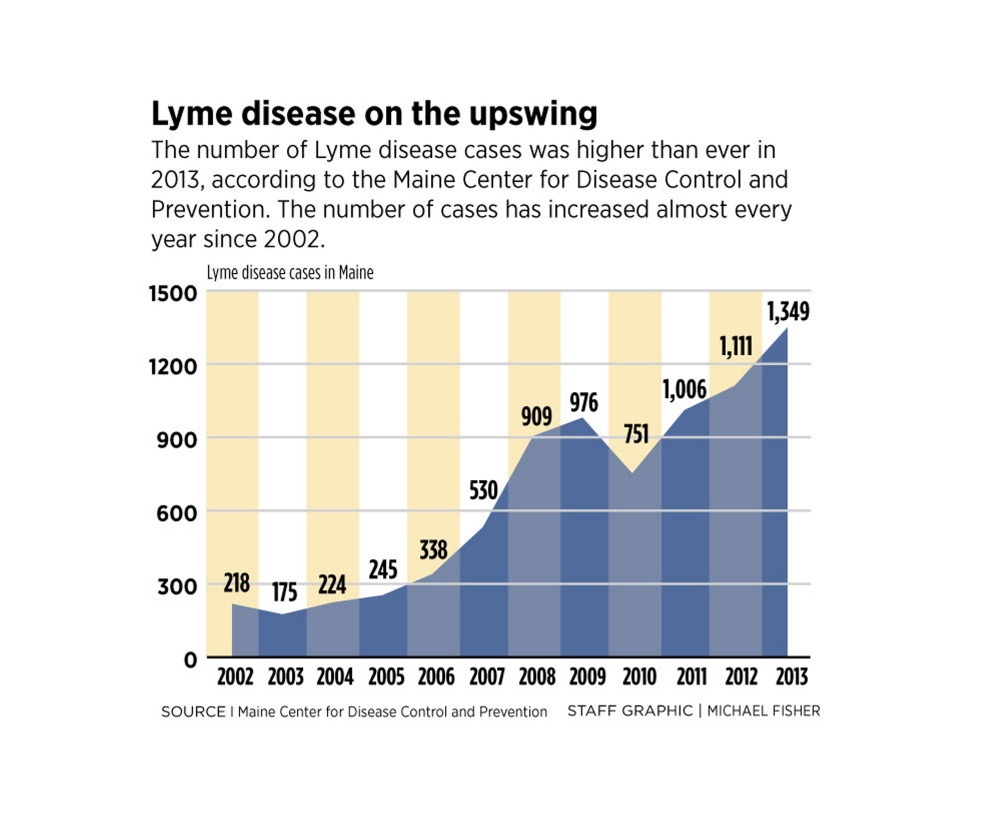Mainers endured a long and teeth-chattering winter, but the blasts of below-freezing temperatures and abundant snowfall didn’t hurt the tick population, experts say.
Tick season is under way, with early counts indicating that the tick population appears to be similar to last year, said Chuck Lubelczyk, an ecologist with Maine Medical Center Research Institute.
“They seem to be pretty abundant this spring,” Lubelczyk said. Researchers collect ticks to determine where they are and how populous they have become. Deer ticks have spread across much of the state over the last 10 years, according to Maine Medical Center.
The 2013 incidence of Lyme disease, transmitted by deer ticks, was the highest ever recorded by the Maine Center for Disease Control and Prevention, with 1,349 cases across Maine.
The hardy arachnids lie dormant in the snow, and it takes a long period of bitterly cold weather without snow to even have a chance of knocking back the ticks, experts say.
“The snow acts as a nice insulating blanket for the ticks,” Lubelczyk said. “They survive quite well under the snow.”
Portland residents experienced more than 33 inches of additional snowfall compared to the average winter from December through February, according to the National Weather Service, with nearly 80 inches of snow during those months.
Lubelczyk said it would require about two weeks of extremely cold weather – probably below-zero temperatures – to have any impact on the tick population.
While the Portland area experienced 10 days of below-zero temperatures this winter, plus the coldest March in nearly 50 years, according to the weather service, it was not enough to harm the ticks.
“There’s not a whole lot that affects them,” said Bob Maurais, part-owner of Mainely Ticks, a tick management and education business. “We’re already getting calls about ticks. The most important thing people can do is to avoid tick habitat.”
Lubelczyk said that what a long winter does do is delay the start of tick season, because ticks tend to be inactive at temperatures below 40 degrees.
“A later season means there’s going to be fewer weeks of people being exposed to ticks that carry Lyme disease,” Lubelczyk said. “And yet we had a late start last year to tick season, and last year we had the most cases of Lyme disease ever recorded. It’s really hard to predict, and we won’t know until July and August (when ticks are most active).”
Tick season began in late March last year – week 13 – and this year the tick season began one week later, the 14th week of the year, he said.
From 2010-12, tick season started in February to early March as warmer temperatures began earlier in Maine in those years, according to the research institute.
Another issue is the health of the deer herd in northern Maine, which may not affect the overall tick population but could slow the spread of ticks to northern Maine, Lubelczyk said, since the deer ticks could have fewer hosts to feed on.
The state has not officially estimated the deer population since 2003, but anecdotally, this year’s harsh winter appears to have reduced the deer population in northern Maine and there are concerns that the northern deer herd is migrating to southern Maine.
Maurais said the best protection against Lyme disease is to be aware of tick habitat – the woodlands or brush – wear long clothing and tick repellent, and to check yourself for ticks if you’ve been out in tick habitat. Ticks cannot transmit Lyme disease without being attached to the host for at least 36 hours, according to the American Lyme Disease Foundation.
Deer ticks are smaller than the more common dog tick, but if you’re not sure what type of tick has attached to you, you can send the dead tick to the tick lab at the University of Maine Extension Tick ID Lab, 491 College Ave., Orono 04473. For more information, call 581-3880.
Joe Lawlor can be contacted at 791-6376 or at:
jlawlor@pressherald.com
Twitter: @joelawlorph
Send questions/comments to the editors.





Comments are no longer available on this story